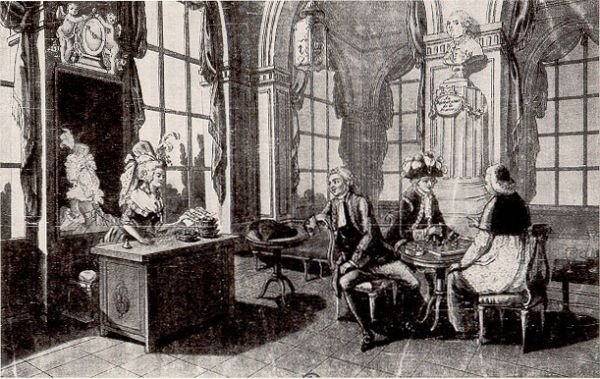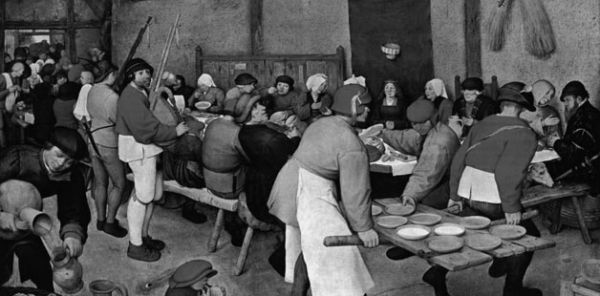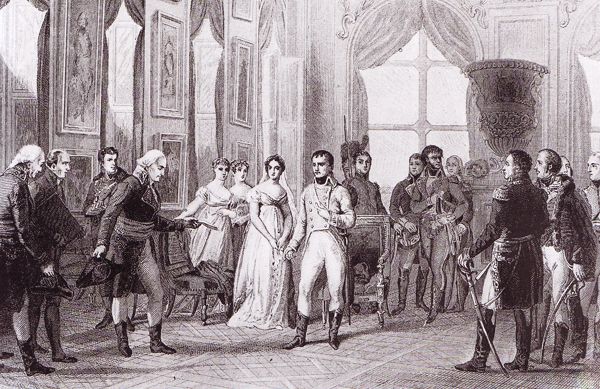By Mohammed Ghobari and Edmund Blair
Demonstrators attacked the
U.S. embassies in Yemen and
Egypt on Thursday in protest at a film they consider blasphemous to Islam, and the
United States sent warships towards
Libya, where the U.S. ambassador was killed in related violence this week.
In Libya, authorities said they had made four arrests in the investigation into the attack that killed ambassador Christopher Stevens and three other Americas in Benghazi on Tuesday.
U.S. President Barack Obama,
facing a new foreign policy crisis less than two months before seeking
re-election, has vowed to bring to justice those responsible for the
Benghazi attack, which U.S. officials said may have been planned in
advance - possibly by an al Qaeda-linked group.
U.S. Secretary of State Hillary Clinton said Washington
had nothing to do with the crudely made film posted on the Internet,
which she called "disgusting and reprehensible."
The amateurish production, entitled the "Innocence of
Muslims," and originating in the United States, portrays Mohammad as a
womanizer, a homosexual and a child abuser.
For many Muslims, any depiction of the Prophet is
blasphemous and caricatures or other characterizations have in the past
provoked violent protests across the Muslim world.
Demonstrations
spread further on Thursday, with U.S. embassies again the targets of
popular anger among Muslims questioning why the United States has failed
to take action against the makers of the film.
Hundreds of Yemenis broke through the main gate of the
heavily fortified U.S. embassy compound in Sanaa, shouting "We sacrifice
ourselves for you, Messenger of God." They smashed windows of security
offices outside the embassy and burned cars.
A security source said at least 15 people were wounded,
some by gunfire, before the government ringed the area with troops.
In Egypt, protesters hurled stones at a police cordon
around the U.S. embassy in Cairo after climbing into the compound and
tearing down the American flag. The state news agency said 13 people had
been hurt in violence since late on Wednesday.
Around 200 demonstrators gathered outside the U.S.
embassy in Kuwait and hoisted banners, one of which bread in English:
"USA stop the bullshit. Respect us."
In Bangladesh, Islamists tried to march on the U.S.
embassy in Dhaka and Iranian students protested in Tehran. Earlier in
the week, there were protests outside U.S. missions in Tunisia, Morocco
and Sudan and state-backed Islamic scholars in Sudan have called a mass
protest after Friday prayers.
The U.S. ambassador to Libya was killed during a
protest against the film when Islamists armed with guns, mortars and
grenades staged military-style assaults on the Benghazi mission.
A Libyan doctor
said Stevens died of smoke inhalation. U.S. information technology
specialist Sean Smith also died at the consulate, while two other
Americans were killed when a squad of security personnel sent by
helicopter from Tripoli to rescue diplomats from a safe house came under
mortar attack.
Of the latter, one was identified by his family as Glen
Doherty, 42, a former Navy SEAL who worked as a private security
contractor. U.S. media identified the other man as another former navy
SEAL - Tyrone Woods, aged 41.
In an interview with the U.S. network ABC News last
month Doherty said he was working with the State Department on an
intelligence mission to round up and destroy shoulder-fired
surface-to-air missiles.
Thousand of these
missiles went missing in Libya after Muammar Gaddafi's overthrow by in a
U.S.-backed uprising last year, prompting concerns that they could end
up in the hands of al Qaeda militants.
FIRST U.S. AMBASSADOR KILLED SINCE 1979
Stevens, 52, had spent a career operating in perilous
places, mostly in the Arab world, and became the first American
ambassador killed in an attack since Adolph Dubs, the U.S. envoy to
Afghanistan, died in a 1979 kidnapping attempt.
Tuesday's incident, on what was the 11th anniversary of
al Qaeda's attacks on the United States on September 11, 2001, has
created a worrying foreign policy crisis for Obama ahead of his
re-election bid.
Speaking at a campaign rally in Colorado on Thursday,
Obama said he had ordered his administration to do whatever was
necessary to protect Americans abroad and that aides had been in contact
with other governments "to let them know they've got a responsibility
to protect our citizens."
The U.S. military has dispatched two destroyers toward
the Libyan coast, in what an official said was a move to give the
administration flexibility for any future action. The USS Laboon, was
already in position and the other destroyer, the USS McFaul, was at
least a day away, a U.S. official said.
The U.S. military also sent a Marine Corps anti-terrorist team to boost security in Libya.
Republican Mitt Romney,
Obama's challenger, criticized the president's response to the crisis
earlier this week, saying it was disgraceful to be seen to be
apologizing for American values of free speech.
Obama's campaign accused Romney of trying to score
political points at a time of national tragedy and the challenger also
provoked some criticism from within his own party.
Campaigning on Thursday, Romney stopped short of
repeating the charge, but said that under Obama the United States seemed
to be at the mercy of world events rather than shaping them, and argued
for a stronger military, at a time when U.S. armed forces are facing an
unprecedented budget squeeze.
The administration again sought to calm Muslim tensions on Thursday.
Clinton said Washington rejected the film's message
absolutely, and added: "It appears to have a deeply cynical purpose: to
denigrate a great religion and provoke rage."
At the same time,
Clinton noted U.S. religious tolerance and commitment to freedom of
speech and said there was no justification for violence.
"I know it is hard for some people to understand why
the United States cannot or does not just prevent these kinds of
reprehensible videos from ever seeing the light of day," she said. "I
would note that in today's world, with today's technologies, that is
virtually impossible.
"But even if it were possible our country does have a
long tradition of free expression which is enshrined in our constitution
and our law. And we do not stop individual citizens from expressing
their views no matter how distasteful they may be."
AL QAEDA LINK SEEN
Among the assailants in Benghazi, Libyans identified
units of a heavily armed local Islamist group, Ansar al-Sharia, which
sympathizes with al Qaeda and derides Libya's U.S.-backed bid for
democracy.
Former Libya militant commander Noman Benotman, now
president of Britain's Quilliam think tank, said Western officials were
investigating a possible link with a paramilitary training camp about
100 miles south of the eastern Libyan town of Derna, near the Egyptian
border.
U.S. officials said there were suggestions members of
al Qaeda's North Africa-based affiliate may have been involved.
Libya's new Prime Minister Mustafa Abu Shagour confirmed arrests had been made and more could be expected.
"We don't know if they are affiliated with a particular
group or not, there are a lot of suspicions, but ... we have to go
through with the investigation and find out who these people are and if
they belong to a particular group, then we have to deal with that
group," he said.
"We ... assure the people that we are going after them,
that we are going to bring them to justice and they have to be punished
for their act. This is not acceptable."
A spokesman for Ansar al-Sharia denied involvement in
the attack and blamed the violence on firing on the protesters by
consulate staff.
"It was a peaceful protest, and the firing on the
protesters inflamed the situation and gave it a different course," Hani
Mansouri told a news conference in Benghazi.
At the same time, Mansouri said the United States
should have had the wisdom to evacuate its ambassador on the September
11 anniversary as a precaution.
Yemen, a key U.S.
ally, is home to Al Qaeda in the Arabian Peninsula (AQAP), viewed by
Washington as the most dangerous branch of the militant network
established by Osama bin Laden.
Clashes near the U.S. embassy there flared up on and
off but died down as night fell. Residents living nearby said they
feared more violent protests after Friday prayers.
"It is a dangerous situation," one resident told
Reuters. "I cannot wait until the morning to move my family to another
neighborhood until the situation is totally calm."
In Nigeria, the government put police on high alert and
stepped up security around all foreign missions, also fearing an
Islamist backlash, possibly after Friday prayers.
An actress in the California production that has
provoked the unrest said the video as it appeared bore no resemblance to
the original filming. She said she had not been aware it was about the
Prophet Mohammad.
Many Muslim states
focused their condemnation on the film and will be concerned about
preventing a repeat of the fallout seen after publication in a Danish
newspaper of cartoons of the Prophet Mohammad. This touched off riots in
the Middle East, Africa and Asia in 2006 in which at least 50 people
were killed.
Afghan President
Hamid Karzai has called the making of the movie a "devilish act" but
said he was certain those involved in its production were a very small
minority.
The U.S. embassy in
Kabul has appealed to Afghan leaders for help in "maintaining calm" and
Afghanistan ordered the YouTube site shut down so Afghans would not be
able to see the film. YouTube, owned by Google Inc, said it would not
remove the clip but had blocked access in Egypt and Libya.
Libyan leader
Mohammed Magarief and Yemeni President Mansour Hadi both apologized to
the United States over the attacks and Egypt's Islamist President
Mohamed Mursi condemned them on television while also rejecting any
"insult to the Prophet".
Russian President
Vladimir Putin, a sharp critic the Western military intervention in
Libya and of Western backing for Syria's rebels, called Stevens' death a
tragedy and said Western support for rebels in Arab states was causing
chaos.





 A
group of people in San Francisco called the Guerrilla Grafters
surreptitiously graft fruit tree branches onto non-fruiting trees in
public spaces in the city -about 50 trees so far. Tom Levy of SFGate
spoke with two of the "undercover orchardists," Tara Hui and Miriam
Goldberg.
A
group of people in San Francisco called the Guerrilla Grafters
surreptitiously graft fruit tree branches onto non-fruiting trees in
public spaces in the city -about 50 trees so far. Tom Levy of SFGate
spoke with two of the "undercover orchardists," Tara Hui and Miriam
Goldberg. Cybercriminals
are all about efficiency these days. And because waiting for people to
visit unsavory web neighborhoods or click on suspicious emailed links
are totally inefficient, they've come up with a clever plan: install malwares
straight on PC production lines.
Cybercriminals
are all about efficiency these days. And because waiting for people to
visit unsavory web neighborhoods or click on suspicious emailed links
are totally inefficient, they've come up with a clever plan: install malwares
straight on PC production lines.
 When
the Berlin Wall came down, the East German secret police, known as
Stasi, knew their days were numbered, so they began to shred their
extensive files. And when the shredders broke down, they tore documents
into pieces. What they left behind is the biggest jigsaw puzzle ever.
Twenty years later, little progress had been made reconstructing
documents from the six hundred million pieces of paper, according to Joachim Haussler of the present Stasi archives authority.
When
the Berlin Wall came down, the East German secret police, known as
Stasi, knew their days were numbered, so they began to shred their
extensive files. And when the shredders broke down, they tore documents
into pieces. What they left behind is the biggest jigsaw puzzle ever.
Twenty years later, little progress had been made reconstructing
documents from the six hundred million pieces of paper, according to Joachim Haussler of the present Stasi archives authority.
 It
sounded like a plot straight out of Seinfeld, but Jonathan Hood really
did pay his school tuition with mail-in rebates.
It
sounded like a plot straight out of Seinfeld, but Jonathan Hood really
did pay his school tuition with mail-in rebates.



















